The quality of treated water is not being monitored completely or accurately at several major sewage treatment plants (STP), managed by Bangalore Water Supply and Sewerage Board (BWSSB), according to a study by ActionAid Association. At least 13 STPs were found to not be monitoring important water quality parameters.
The study was conducted between November and December 2022 and the report was submitted to BWSSB on February 20, 2023, according to Raghavendra Pachhapur, senior project lead at Action Aid India.
The media reported on the issue the very next day. I checked the BWSSB portal to see if some of the missing data from the study period had since been uploaded to the site and found STPs are still dysfunctional.
This raises questions about the water quality in the city’s lakes, as many lakes are going to see an influx of treated sewage.
Bengaluru generates 1440 mld (million litres per day) of sewage every year, which is approximately 30% of the entire state’s sewage generation. Several reports have already pointed out that there are serious issues in the city’s sewage management. An insufficient and inefficient sewerage network often results in untreated water entering lakes in the city.
Over the years, BWSSB has ramped up its efforts and increased the number of STPs around Bengaluru. Currently, the agency manages 33 STPs, which it claims can treat up to 1535 mld of wastewater. Most of these STPs are located close to lakes in the Koramangala-Challaghatta, Vrishabhawathi and Hebbal valleys.
The plants are also supposed to monitor the treated water quality for different physical, chemical and biological pollutants. BWSSB as well as other STP owners (such as apartments) are mandated by the Karnataka State Pollution Control Board (KSPCB) to measure real time water quality.
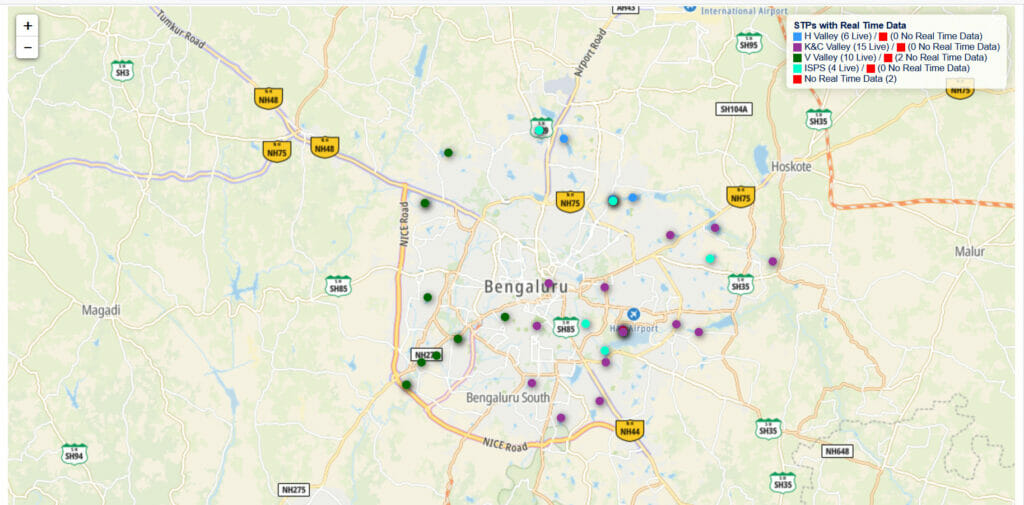
Why ActionAid conducted the study
To understand how this works, I spoke to staff at Aaxis Nano Technologies, a Noida based company that manages data loggers for some of the BWSSB STPs. An environmental technician, who did not want to be identified, explains that this is done by sensors. “Different sensors test for different parameters in the treated water and then store and transmit this data on to a server,” the technician says.
BWSSB-run STPs are supposed to measure seven parameters: Chemical Oxygen Demand (COD), Biochemical Oxygen Demand (BOD), Total Suspended Solids (TSS), pH, Ammonical Nitrogen, Total Nitrogen, and faecal coliform in the treated water. Any interested person can potentially check how well the STPs are performing in terms of removing certain pollutants from the wastewater by logging onto the BWSSB STP portal.
In 2022, Raghavendra started to hear about BWSSB’s plans to release treated wastewater into more lakes. “For some reason, I had developed a fascination for water quality,” he chuckles.
“There were reports that Nagasandra Kere would get treated water,” he adds. In fact, the agency claimed that by 2025, all lakes in Bengaluru would only receive treated water and no sewage.
Raghavendra, a passionate lake conservationist and naturalist, was concerned about whether the treated water was going to be of good quality particularly for fish, birds and plants. “We were documenting so many fishkill in Bengaluru lakes, so I knew water quality was of concern.”
Curious about the quality of treated sewage water, Raghavendra began to look at BWSSB’s online data portal for STPs last year. To his surprise, he found that data from most STPs in the city were missing in the BWSSB portal and decided to investigate in a more structured manner.
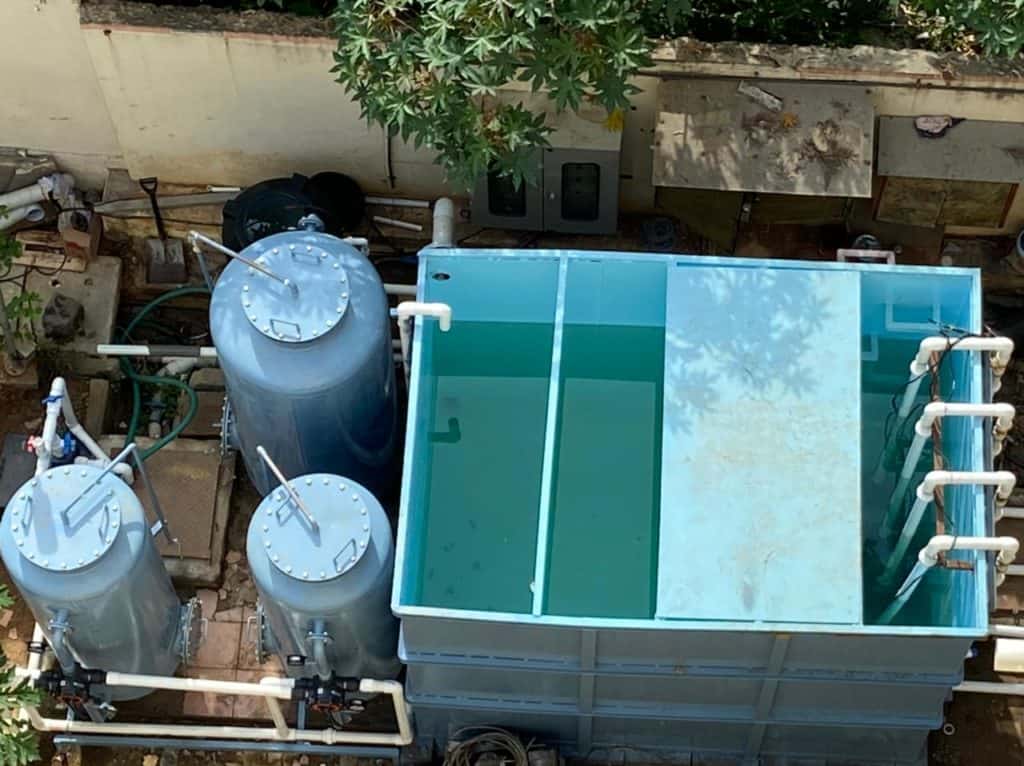
Raghavendra collated the daily average values for 31 of these STPs from the BWSSB portal for 45 days, from November 1st to December 15th last year. The data was analysed by Kavya Bhandari, an Action Aid volunteer based in IIT Bombay.
Read more: Why KSPCB’s real-time probe for STPs is ridiculous
Missing data from BWSSB portal
The team found that BWSSB portal showed incorrect or no data for at least one of the parameters for all the STPs. For five STPs, the BWSSB site showed incorrect or no water quality data for two weeks. For 13 STPs, the site showed wrong or no water quality data for over 41 of the 45 days for at least one parameter.
Eight STPs had wrong or no data for all six parameters that the BWSSB were supposed to be measuring. Of these, five STPs Kengeri, Koramangala and Challaghatta Valley (30 mld), Koramangala and Challaghatta Valley (218 mld), Rajacanal (old), and Hebbal were not configured to monitor any parameters of water quality.
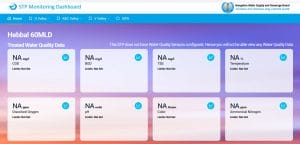
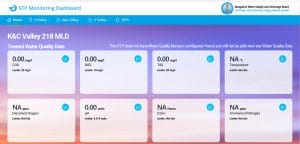
The Yelahanka STP, located near the Allallasandra Kere, was configured to monitor six parameters, but the site did not have any data for all 45 days.
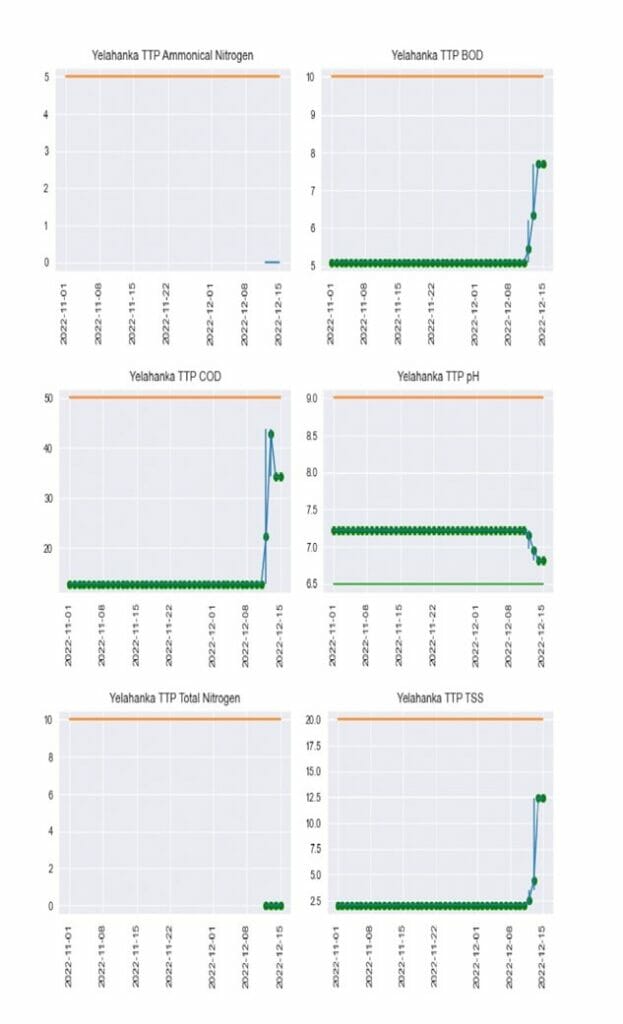
However, data missing on the portal could be an indication of a glitch in the transmitting system, points out the technician from Aaxis Nano Technologies. “These sensors transmit data via sim cards,” he says. “If the sim cards lose signal or are not recharged, they can stop transmitting for a few days. But the data will still be there.”
STPs yet to function
I also checked Aaxis Nano Technologies internal data portal for BWSSB STPs, which shows up on Google search. The company portal, which can be accessed here, shows real time values for 21 of the BWSSB STPs, including some of the worst STPs in terms of data.
As of March 1 2023, the Yelahanka STP, however, appears to now be transmitting data to the BWSSB portal. I could also spot data for this STP on the Aaxis technologies portal from March 2nd onwards. But there are no records of water quality from this STP from November 2022 to February 2023, suggesting that Yelahanka had not been monitoring data during this period or the data was still not available to the public.

The five STPs that had not been configured to monitor any parameters were still in the same state. I could further confirm that Koramangala and Challaghatta STPs (30 and 218 mld) were still not configured to monitor water quality, from the Aaxis Technologies BWSSB portal.
Treated water from the Hebbal and Koramangala and Challaghatta STPs were being supplied to lakes in the Kolar district. This plan to supply wastewater from Bengaluru to rural districts has been questioned several times. BWSSB and KSPCB have assured the Supreme Court that the water was being properly treated and safe for farmers to use.
The Aaxis Technologies employee was quick to claim that STPs which were not configured to monitor any data were likely using sensors from other companies. “Our internal BWSSB portal will show all STPs that BWSSB wants us to take into the portal. But that does not mean all the STPs there are monitored with our sensors,” he says. He also suggested that whether data is correctly configured depends entirely on the contractor in charge of the STP.
Raghavendra is glad that Yelahanka STP seems to be monitoring water quality now, but is incensed that the other STPs did not have any data configured. “What are these people doing? How do we know what sort of water is being released into our lakes?” he asks.
STPs recording incorrect data
The report also found that several STPs had incorrect data. The study classified data as incorrect if the values for parameters like pH, temperature and COD remained constant for several days at a time. Raghavendra accepts that this was an assumption on his part.
For example, the report found that the Bellandur-Amani Kere STP, located at Varthur lake, recorded the exact same values of COD (25.68), BOD (4.17), pH (7.46), TSS (0.39), Ammonical Nitrogen (0.39) and Total Nitrogen (0.60) for a 20 day period and then again for a 15 day period. That is for 35 of the 45 days, the values for these three parameters were repeated.
“I can understand a parameter not changing every 15 minutes. But if it doesn’t change for ten days, I think it must be wrong,” Raghavendra explains.
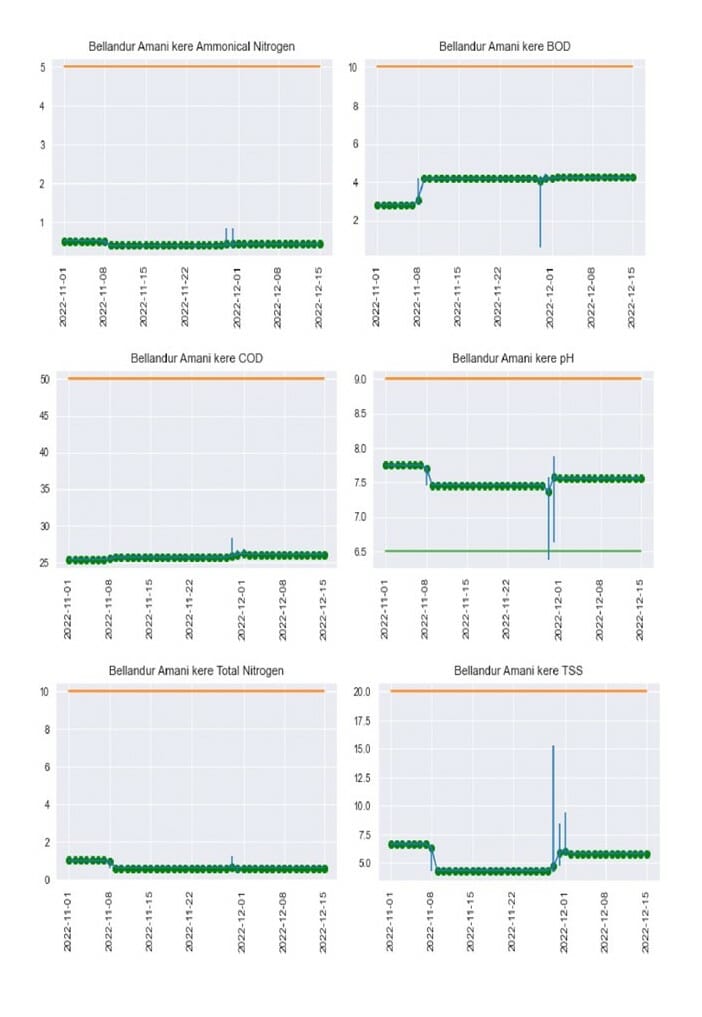
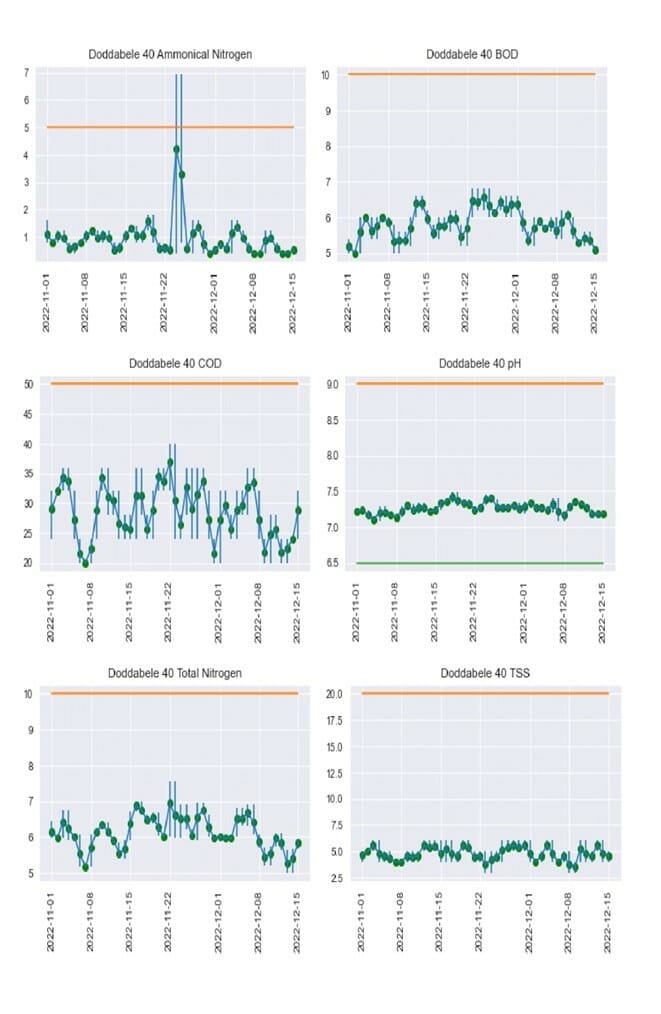
The technician from Aaxis Technologies concurred with this assumption. “Parameters like pH, temperature, COD and BOD do change over the days. They cannot be constant for many days,” he says.
For the values to be accurate, the STP would need to receive the exact same volume and composition of sewage everyday. The water would then have to be treated exactly the same way everyday, he explains.
Read more: Why Bellandur lake spews toxic froth, and how to stop it
To see if this situation had since changed, I checked the COD values on the BWSSB portal for the Bellandur Ammani Kere STP from February 1st to March 1st of this year. The data I downloaded showed the exact same COD value (26.36) for every five minutes for the whole month.
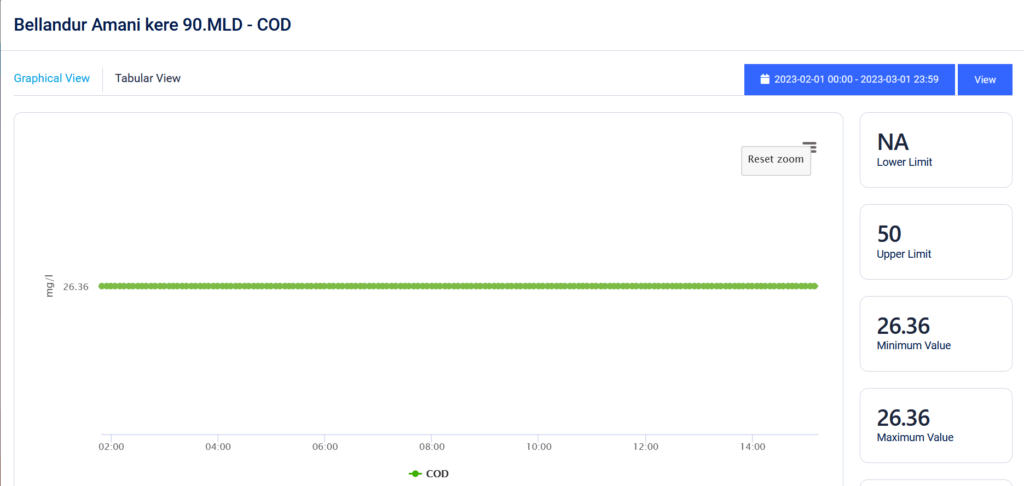
Aaxis Nano Technologies’ BWSSB portal also showed the same values for all parameters at this STP from March 2, 2023 till date, suggesting that the STP was not monitoring treated water quality correctly. The Aaxis Technologies technician said he could not confirm if the Bellandur Ammani Kere STP was being monitored by Aaxis sensors.
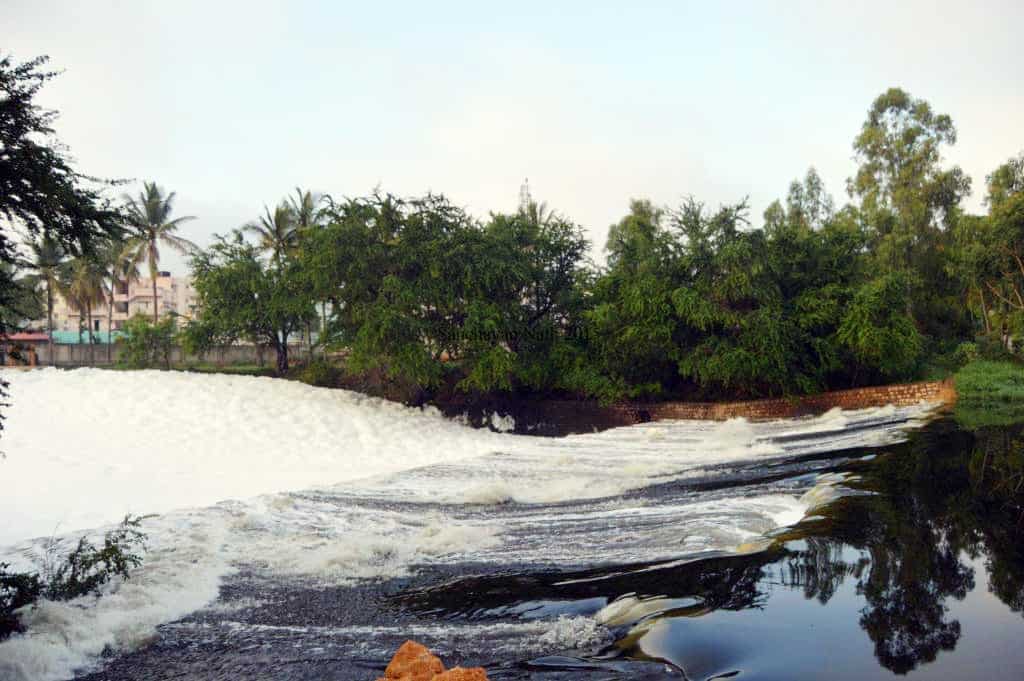
The chairman of BWSSB and KSPCB were not available for comment. The story will be updated if they respond.
In the second part of this story we will look at STPs, which are treating water sub-optimally, and what that means for our lakes.
This report highlights abject failures at FOUR different levels:
1. BWSSB’s plant-level management
2. BWSSB’s central management
3. KSPCB’s monitoring of individual STPs
4. KSPCB’s pollution checks at various points in the valley system
How come the malfunctioning of BWSSB STPs was never detected at these four levels??
And this systemic problem has gone on for a very long time (it’s not a glitch for a day).
———-
Note that 95% of the city’s sewage is treated by the BWSSB STPs.
(Large apartments treat only 5% of the city’s sewage.)
Therefore if our water bodies are carrying any sewage, BWSSB is the major culprit.
And this is NOT the only problem:
>> BWSSB is guilty of not providing sewage connection to a large population.
>> KSPCB and BBMP are guilty of allowing such buildings to operate without OC
(These buildings don’t have their own STPs either)
>> KSPCB is guilty of letting industries operate without ETPs.
A lot of untreated industrial effluent enters the city’s water bodies.
But neither the NGT nor the Karnataka HC nor the Lokayukta have taken any notice of this fact.
>> No one is served any notice.
>> No one is punished for dereliction of duty
>> No one is punished for official/criminal misconduct.
Instead, everyone focuses on large apartments, which account for a mere 5% of the total pollution. And many of these private STPs fail to operate properly because of poor design and fabrication, for which the RWAs are not responsible: These faults exist because KSPCB has an immature CFE-CFO process, which approves defective STPs without any due diligence!
To sum up, both the executive and judiciary have failed to ensure that our fundamental right to a clean environment is fulfilled.